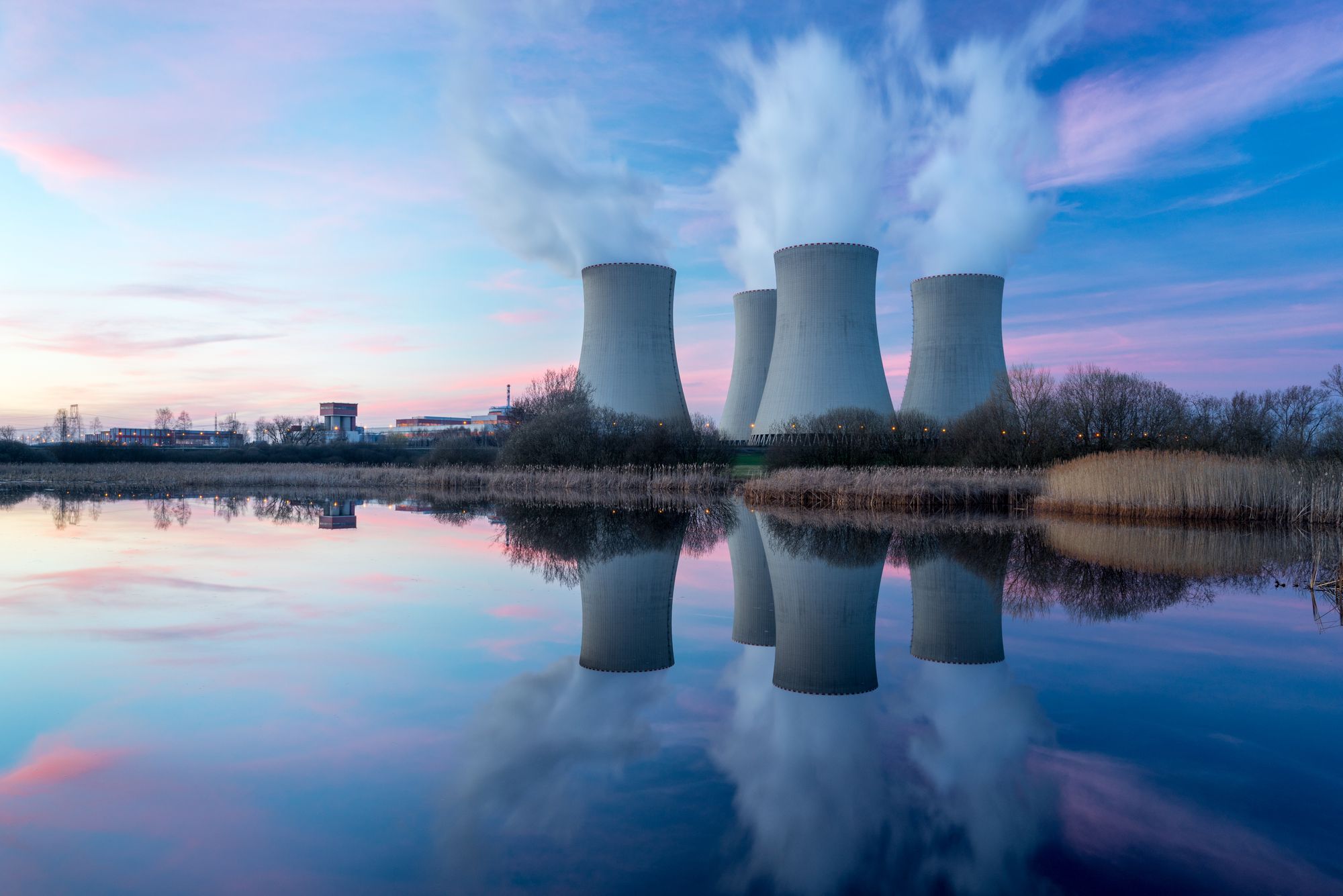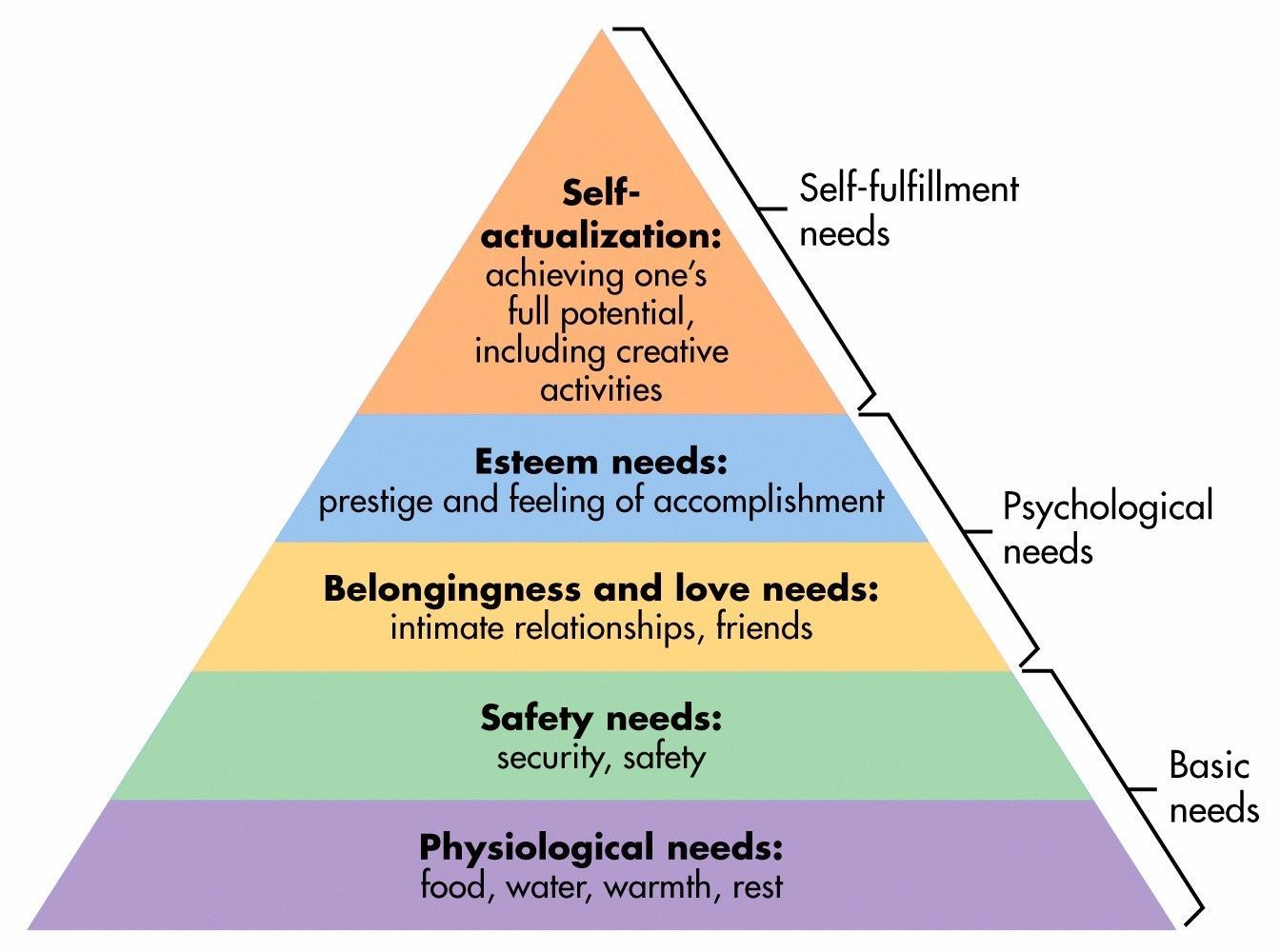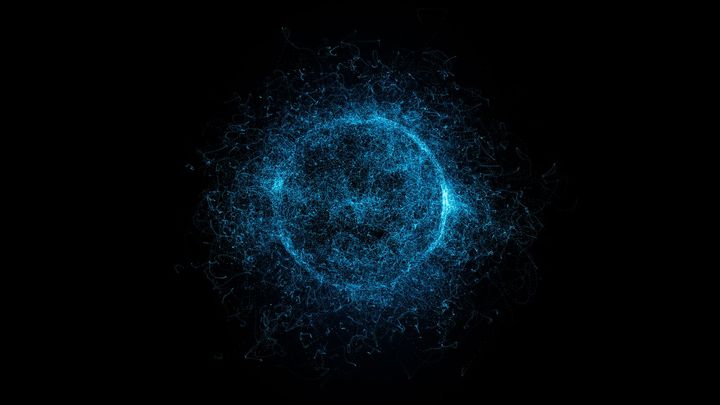Our Great Abstractions
We are at one of the most interesting points in our human history. We could be in the last few generations of life as we know it, as each layer of society is changing exponentially.

Our entire world and society as we know it is built on top of ever expanding layers of abstractions. We all witness these abstractions every day. (cover image a photo by Clark Van Der Beken on Unsplash)
We turn on the faucet, and water appears.
We take out the garbage, and it magically disappears.
We turn on the TV and programming streams into our living room.
We click a few buttons on Amazon, and our package is delivered.
There are so many things that occur at different layers of our society that we often forget just how removed from the inner workings of things we can be. Just reading this article puts us in a group fortunate enough to appreciate many of these abstractions.
Milton Friedman gives us an excellent look into a sliver of these interactions and behind the scenes complexity when talking about how a pencil comes into existence.
So what exactly are these abstractions? What are the various components to complete a mental model of our world given the enormous complexity?
This article attempts to augment the idea of a mental model with three components:
Part 1: Our Growing Abstraction Layers
Part 2: The Driving Forces of Our Humanity and Biology
Part 3: The Lens of Time and History
Part 1: Our Growing Abstraction Layers
As a civilization we have made extraordinary progress in the past 300,000 years. This last post goes through our expanding sphere of knowledge. And as that sphere has grown to be much larger than any individual can understand, we have to make abstractions and attempt to contextualize our position within the great sphere in order to draw context and value. What follows is an attempt to break abstractions into five layers, with each layer building on top of the previous one.
Layer 1 - Physics
For thousands of years, humans have used math and physics to describe our world. The ancient Mesopotamians first used arithmetics nearly 5,000 years ago to manage their societies through taxation, commerce, and calendars. The Ancient Greeks developed the field of physics in their study of the laws governing our universe. Archimedes laid the foundations for physics 2,000 years ago with his mathematical descriptions of the Archimedes screw, pulleys, and levers. Fast forward to the late 1800’s, and James Clerk Maxwell discovered the electromagnetic force, which along with gravity, is one of our four fundamental forces of nature. In 1897, JJ Thomson discovered the electron in his research on cathode rays (which were used in the first color televisions).

Since the earliest days of humanity we have continued to push the boundaries of our understanding of our world. Through chemistry, we have broken down all matter into fundamental elements. With physics and math, we have discovered the properties of magnetism, gravity, atoms, waves, and light.
Almost by definition, physics, mathematics, and chemistry form the most basic understanding of all we know in humanity. So it is a good base layer in the abstraction hierarchy, as everything else in society is built upon these principles and our understanding. Undoubtedly, scientists will continue to push the boundaries of discovery in all of these areas. Perhaps one day we will have quantum computers and answers to our unsolved mysteries.
Layer 2 - Energy & Electricity
The next layer in the abstraction is energy and electricity. Humans require energy to survive in the form of food, and we receive radiant energy from the sun. Energy cannot be created or destroyed - it can only be converted into different forms. Our earliest days as Homo Erectus nearly one million years ago give insight into us converting energy into heat in the form of fire. Gas was first commercialized in 1785 by the British. And then in 1948, we powered the first light bulb using a nuclear reactor.

The earliest fossils of human sapiens can be traced back nearly 300,000 years ago. But it wasn’t until just 400 years ago that humans first began to study electricity. The first demonstrations seemed like magic, with scientists putting on shows and demonstrations of its effects - including the famous key on a kite experiment from Benjamin Franklin. Finally in the mid 1800’s we began to fully understand electricity, how it can be generated, and its potential applications. And in the late 1800’s with the invention of the light bulb, cities across the world began to harness electricity in the form of light.
It is almost impossible to comprehend the timeline of innovation and all of the discoveries that came together to create electricity. 300,000 years ago our early ancestors were roaming the earth as hunters and foragers, just discovering fire. 5,000 years ago we began early studies of math and physics. And only 400 years ago did we first start to research and understand the properties of electricity, until we had the first major application, in the form of the light bulb just over 100 years ago.
Fast forward to today. We literally split atoms to generate heat, which boils water, which generates steam, which spins a turbine, which rotates coils of wire through magnetic fields, which produces a current that travels through our vast electrical infrastructure across the globe and powers nearly everything in society. It is mind boggling. And it all happened in the last 200 years (.06% of humanity). We are well on our way to a Type I Kardashev Civilization.

Layer 3 - Computers & Networking
Moving on up the stack from energy and electricity, we now have computers and networking. The first concepts of computing relied on punch cards, and in 1801 Joseph Marie Jacquard invented a loom for weaving designs that used these punch cards. In 1936 Alan Turing created the first computer as we know it. In 1954 the transistor was invented, and in 1958 we had the first computer chip. And in the late 1960’s came ARPANET which allowed communication of multiple computers on a network.
Now in 2020, we have a global internet infrastructure. Cloud Computing providers allow you to spin up virtual machines all over the globe (and even in space) with the click of a button. Every second, we have more than 3.8 million google searches. We took the concepts of physics, combined them with the production of energy, created electricity, and then built an entire communication layer that powers the fabric of our society. Every sound, image, video, and written word can be broken down into a 1 or a 0 and through wave frequency and modulation and undersea cables and space satellites, we can beam this data in the form of electrical current across the world. Each computer can process billions of operations per second to interpret and create this information.
This description doesn’t even begin to scratch the surface of this ‘abstraction layer’ - it is truly insane to think about the complexity and innovation made in computing in the last century. In less than 100 years, we went from the first computer, to a society where we have billions of networked machines all communicating using hundreds of shared protocols at every layer. It is staggering to think about.
Layer 4 - Products & Applications
Products and applications are often the first layer on top of these earlier presented abstractions that take a physical form. We are familiar with things like cell phones, email, ‘apps’, vacuum cleaners, tractors, and a bag of potato chips. Financial instruments, consulting services, and computing units can also be considered products in the sense that each is a unit of value that can be sold to another person or entity.
Millions of products exist across the world. Products range from a screw, all the way to a Boeing 747, which is the composition of millions of smaller products in and of itself. Just about everything can be considered a product in the right context. And today, nearly every single product relies on the earlier abstractions of physics, electricity, and computers. In the last twenty years, entire products (and companies) have been built behind a single API.

Again we go back to Milton Friedman’s pencil description. There is a vast network of individuals and corporate entities all over the world that come together to manufacture, produce, and/or develop each product or good.
Is a single piece of lumber built on top of physics, electricity, and a computing infrastructure? At face value perhaps not. But does Home Depot run a vast digital operation complete with sales, marketing, logistics, accounting, transport, and manufacturing on top of this? Did every step in the supply chain at some point hit the compute layer (which is built on top of physics and electricity) - absolutely. Every product can be broken down into its subcomponents, which at some point of a global process can be traced back to a computer operation at its base level of recursion.
Layer 5 - Businesses
The last layer is that of business entities. Whether we look at a startup or a Fortune 500 global conglomerate, a company is an organizational structure that is dedicated to the allocation of people and resources in a manner that can sustain itself for a given time. Companies are formed as legal entities, and every transaction a company makes with a customer or another entity eventually makes its way back to the general ledger. Every company has a product or suite of products. And communication across all levels of a company are built on top of our global communication infrastructure.
Government and law also play a major role. Businesses must abide within the regulations and laws that society creates. This process changes from country to country, and world powers and empires grow and fall throughout history. The protocols and societal rules, through their form in law, taxation, and monetary policy foster various business environments and decisions. And in our business climates, economists have a range of metrics to measure the health of an economy, the transactions of each businesses and the exchange of products.
The idea of breaking down everything into these five abstraction layers seeks to provide further context on where everything fits together. Of course there is overlap across layers. Verizon and Cisco are businesses that are building and researching the next generations of our communications network. Microsoft is investing in the next discoveries of quantum computing.

But when we abstract away the details, it is incredible to think that in the last 100 years we as a society have formed entities to manage people and resources that at their definition book transactions to a ledger, which are in turn transmitted across a world connected network as bits, and eventually stored as charged electrons. Absolutely incredible.
Part 2: The Driving Forces of Our Humanity
Understanding the various abstractions present in our world would not be complete without research and the importance of including the human component. Humans are involved in each layer of the previous abstraction. We have evolved over millions of years and continue to strive forward as a society to unlock the next breakthrough. But why is this? What drives us as humans?
We are all different, but we all share similar wants and needs. Abraham Maslow famously created the hierarchical needs we all have as we move from physiological needs for basic survival all the way up to our desires for self-actualization.

And all of us being human are susceptible to the so called seven deadly sins of lust, gluttony, greed, sloth, wrath, envy, and pride. Since the beginning of time we have fought wars with other tribes. This year, the United States will spend nearly one trillion dollars on military spending. It is safe to say there is conflict in the world and we are not all peaceful with our fellow human beings.


Humans are also wired to want more and compete with one another. We want that nicer car, newer apartment, or latest iPhone in our efforts to keep up with the Joneses. We scroll instagram, jealous of our friends and their latest vacations and seemingly perfect lives.
Our desires to move up Maslow’s Hierarchy of Needs combined with our propensity to fall victim to these seven deadly sins have propelled our evolution as a species. It is rooted in our very biology to want more, which leads to progress and innovation at an aggregate level.
What is even harder to fathom is our study and experimentation at a biological level. We now have the ability to self select the desired genes for children. We can ‘think’ an action into existence due to our neurological studies combined with computers and robotics. Eventually we are going to merge with machines and quite literally ensure humans are the biological bootstrapper of artificial intelligence and quite possibly the last generation of people as we know ourselves.

Our biological future can become dystopian very quickly, but it is also worth mentioning that every innovation in our world has come from humans. And we cannot forget biology and people in the earlier mentioned abstraction layers. No success is achieved in a vacuum.
Leaders in all walks of life gain their success through their ability to inspire and lead humans in focused efforts in various domains. Every organization is going through a digital transformation as it is imperative to harness the power of the compute layer of our world to stay relevant in business. But for now, we are all still humans, and our physiological and psychological makeup will still drive the future of our society.
Part 3: The Lens of Time and History
The last piece of the mental model puzzle, and perhaps one of the most ambiguous and complicated is time. We have touched on this topic in each of the sections above - through the timelines of various discoveries, and through our evolution as humans.
Time is the one resource that is finite for all of us. It takes on a different meaning at each stage of our life. We are all different, but time is the one constant for every single person born on this planet. We all have 24 hours in a day, and if we are lucky we have ~72 years on this planet. This scarce resource is what gives all of our life decisions such gravity. We only get one shot at life. It is too sad to link here, but the scene in Interstellar after they return from the planet and Matthew McConaughey watches back the last decades of life is one of the most profound views of seeing time and its value from another dimension.

Time can also make us feel very small. We might think that our founding fathers in America from 1776 are 'old'. If we took all generations in America since the original independence day, this timeline is less than .1% of our existence as homo-sapiens. And our time in this world is but a speck in our planet's 4.5 billion year history.
Because we can all appreciate and experience the importance of time, it makes for one of the best lenses to uncover and see patterns. Historians, economists, investors, and governments all look backwards to be able to attempt to predict the future. It is great to look at the fiscal year P&L to get a sense of a business. But it is the growth, historic cash flows, and market opportunity that must also be analyzed to make an investment.
I think we are at one of the most interesting points in our human history. We could be in the last few generations of life as we know it. For thousands of years, we explored by foot, horse, and boat. It wasn't until 1903, the Wright brothers flew the first airplane. Now nearly 200,000 flights occur across the world on a daily basis. We have rovers and satellites exploring the edges of our galaxy. This happened in 100 years. The first electricity and light bulb came into existence less than 200 years ago. Now nearly everything in our world consumes power.
.png/1200px-Global-primary-energy_(1).png)
The rate of data expansion is even more exponential. All data created up to 2003 totaled 5 exabytes. In 2013, that amount of data was created in two days. And today, we are approaching the zettabyte era. We have machines that were invented for the first time less than 100 years ago that create or process all of this information.
.jpg)

The median age in the United States is 38.3 years old. The top five most valuable companies in the United States were all created more recently than the majority of people were born. Sure enough these companies all help create and process this staggering increase of data.
Only time will tell what the future holds. Hopefully these ideas of a mental model of abstraction layers, human behavior and biology, (and time) can give a tiny glimpse or perspective on where we stand in our great cosmos.






Comments ()